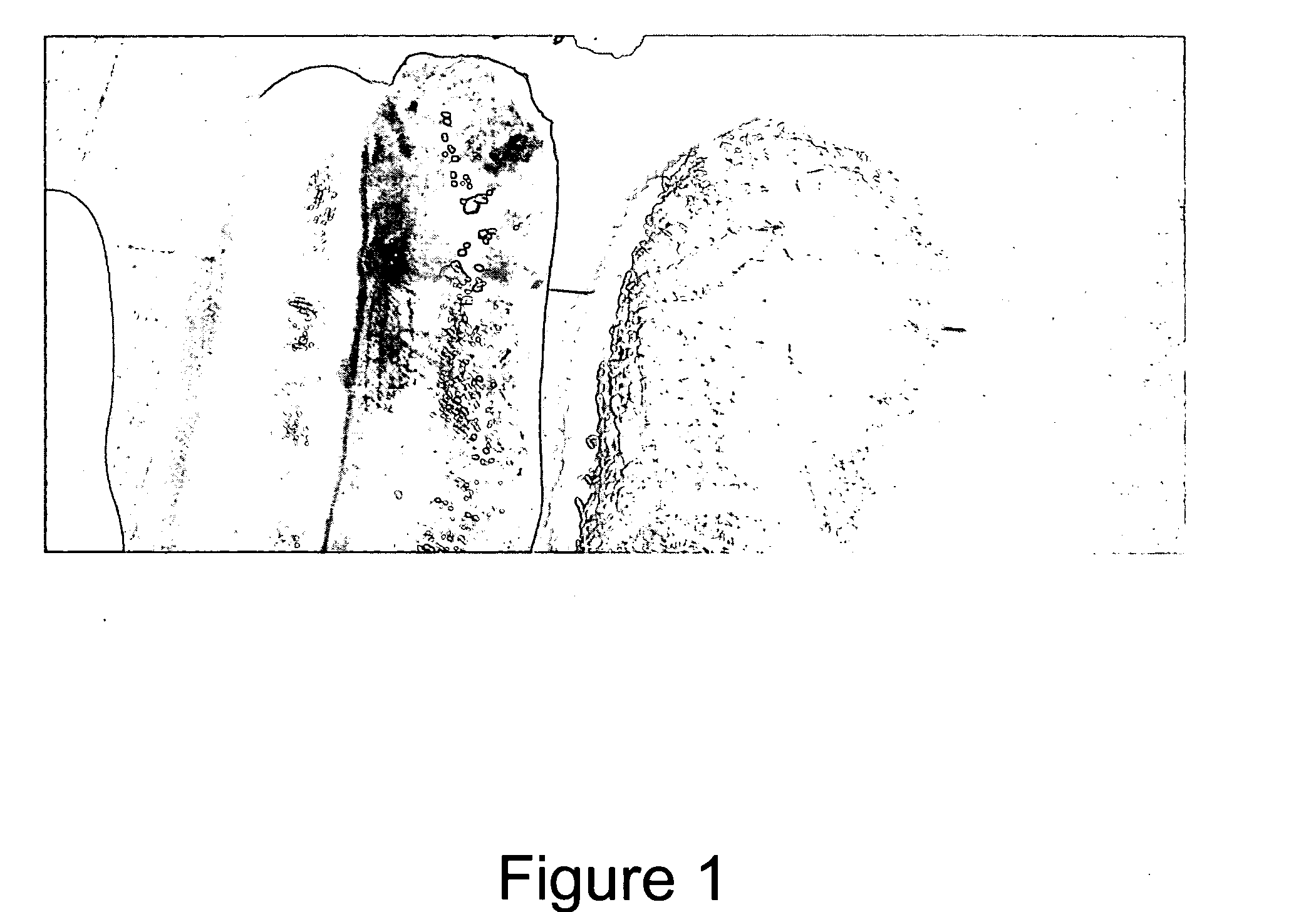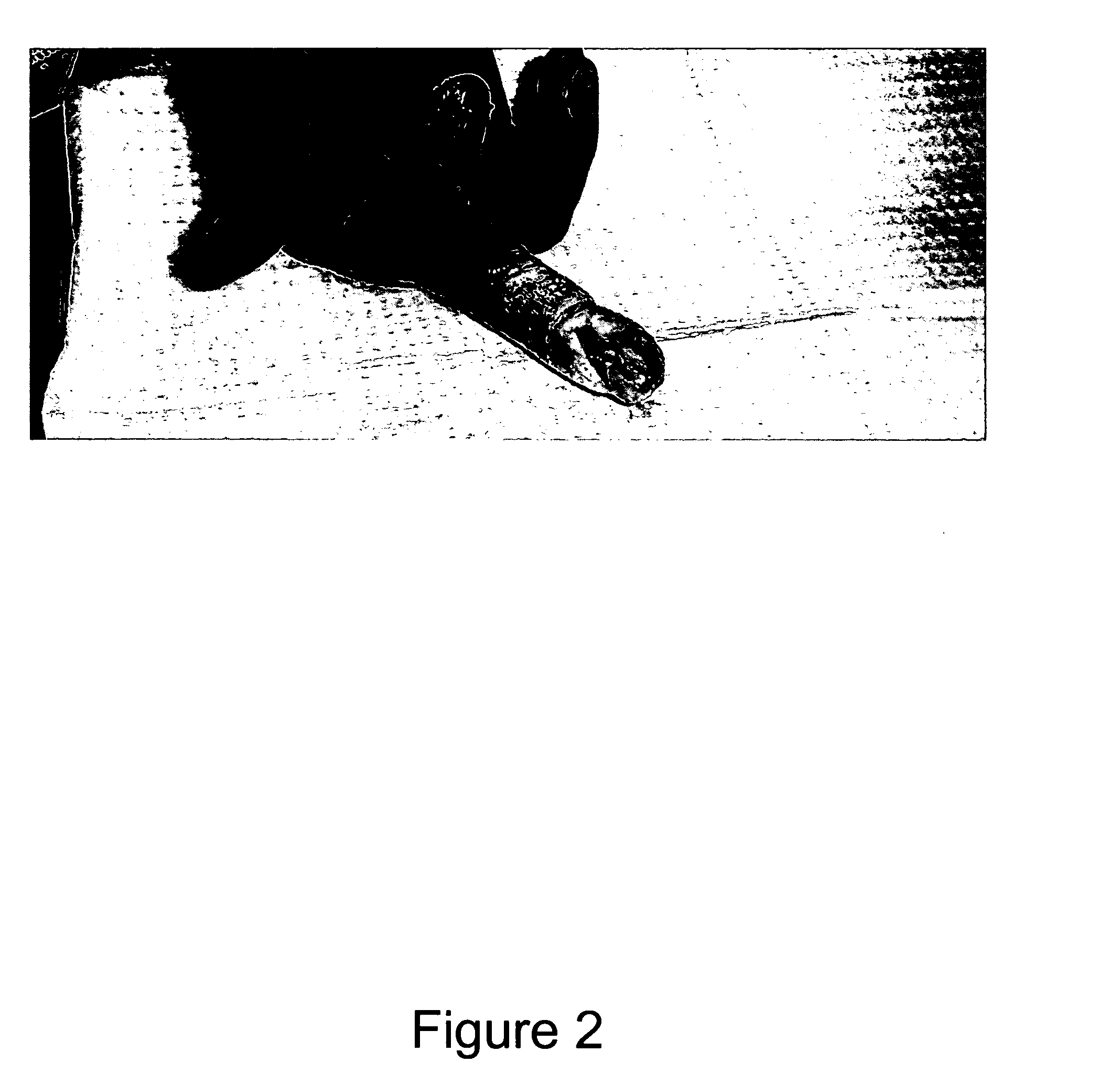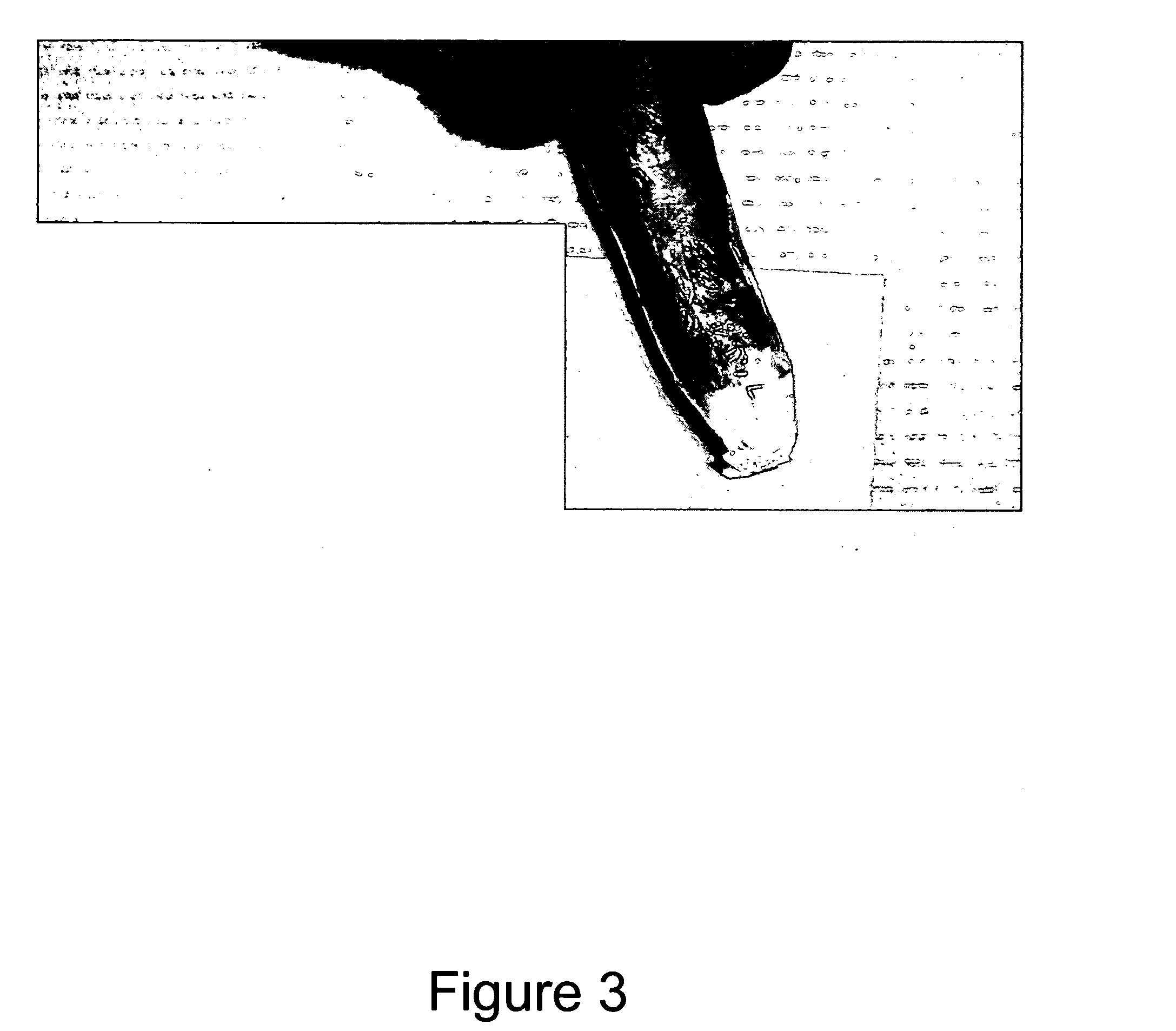Methods of managing multi-tissue injuries
- Summary
- Abstract
- Description
- Claims
- Application Information
AI Technical Summary
Benefits of technology
Problems solved by technology
Method used
Image
Examples
example
[0062] The following example, including the experiments conducted and results achieved are provided for illustrative purposes only and are not to be construed as limiting the invention.
[0063] A 42-year-old patient, a self-employed carpenter, presented with a crushed long and index finger of his hand, with amputation of the end of the long finger and bone. He was treated in the emergency room as follows: the wound was gently cleaned and soaked for 60 seconds in peroxide followed by betadine solution for an additional 60 seconds. The wound was covered with generic silver sulfadiazine cream 1%, an occlusive dressing, Tegaderm™ (3M, St. Paul, Minn.) and then roller gauze.
[0064] He followed up in the office two days later (FIG. 1). The dressing was removed. The surrounding normal skin was cleaned and dried. A ⅛″ layer of Silvadene (Monarch Pharmaceuticals, Inc., Bristol, Tenn.) was applied to the open wound. This was followed by a Tegaderm™ (3M, St. Paul, Minn.) sterile occlusive dress...
PUM
 Login to View More
Login to View More Abstract
Description
Claims
Application Information
 Login to View More
Login to View More - R&D
- Intellectual Property
- Life Sciences
- Materials
- Tech Scout
- Unparalleled Data Quality
- Higher Quality Content
- 60% Fewer Hallucinations
Browse by: Latest US Patents, China's latest patents, Technical Efficacy Thesaurus, Application Domain, Technology Topic, Popular Technical Reports.
© 2025 PatSnap. All rights reserved.Legal|Privacy policy|Modern Slavery Act Transparency Statement|Sitemap|About US| Contact US: help@patsnap.com



